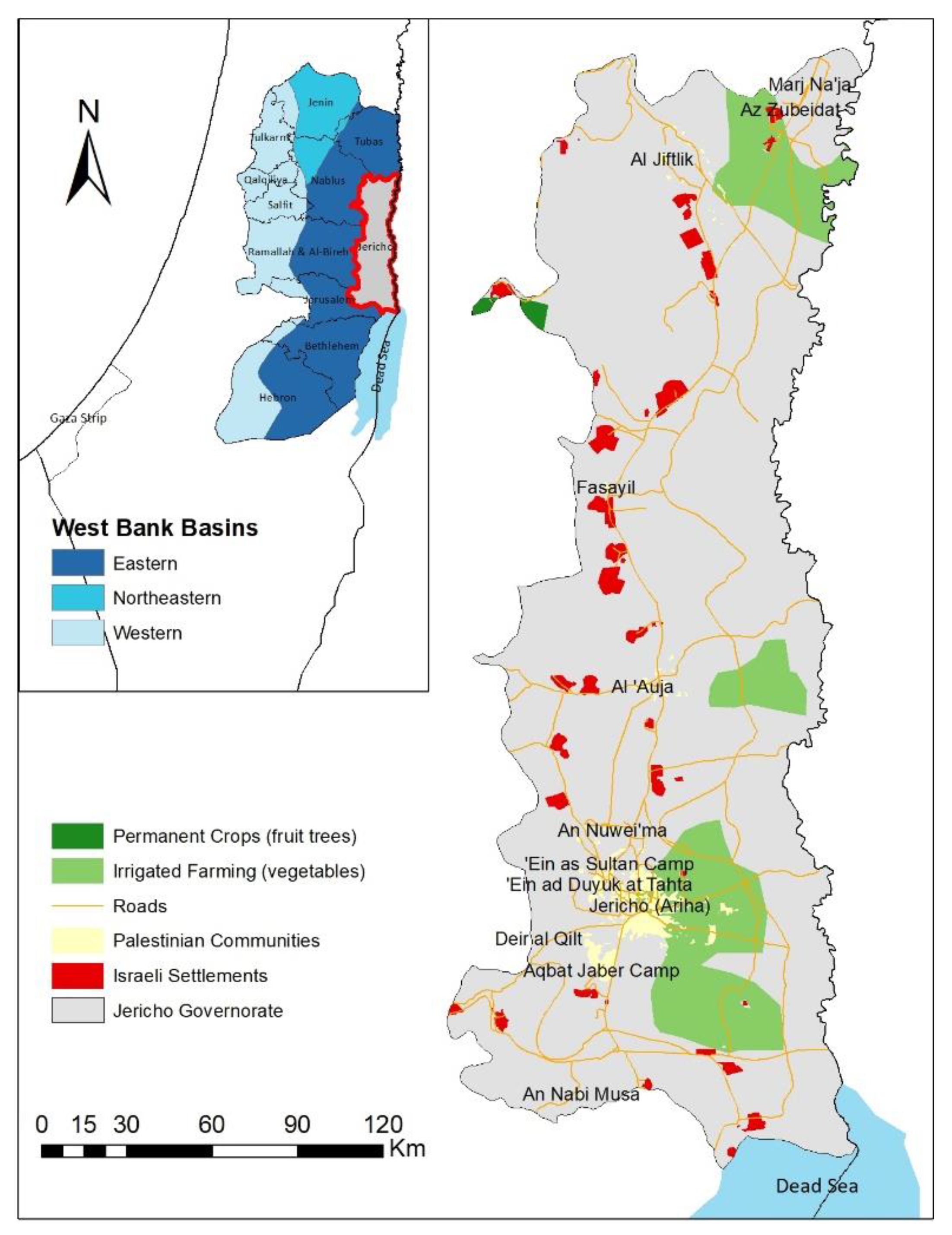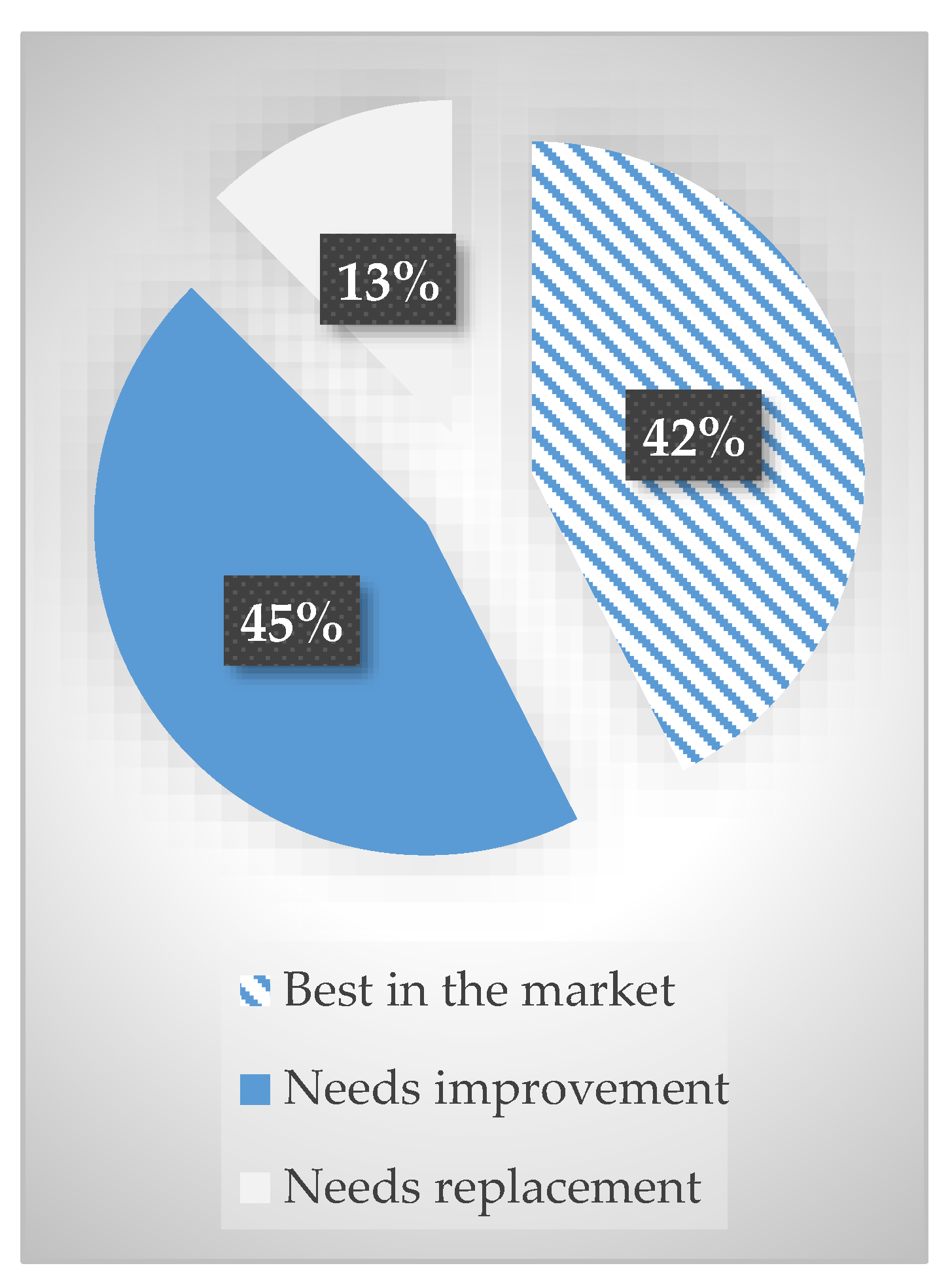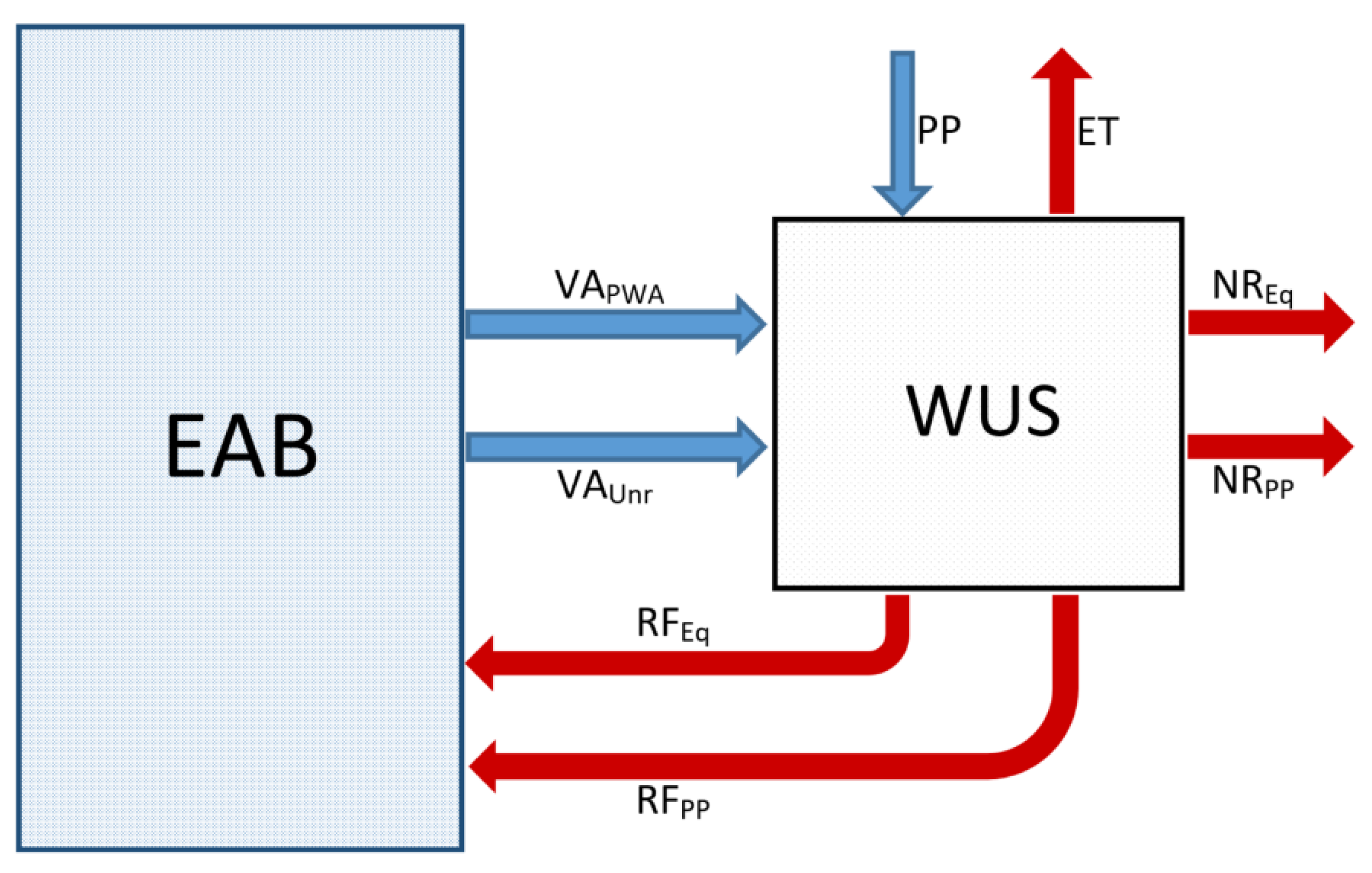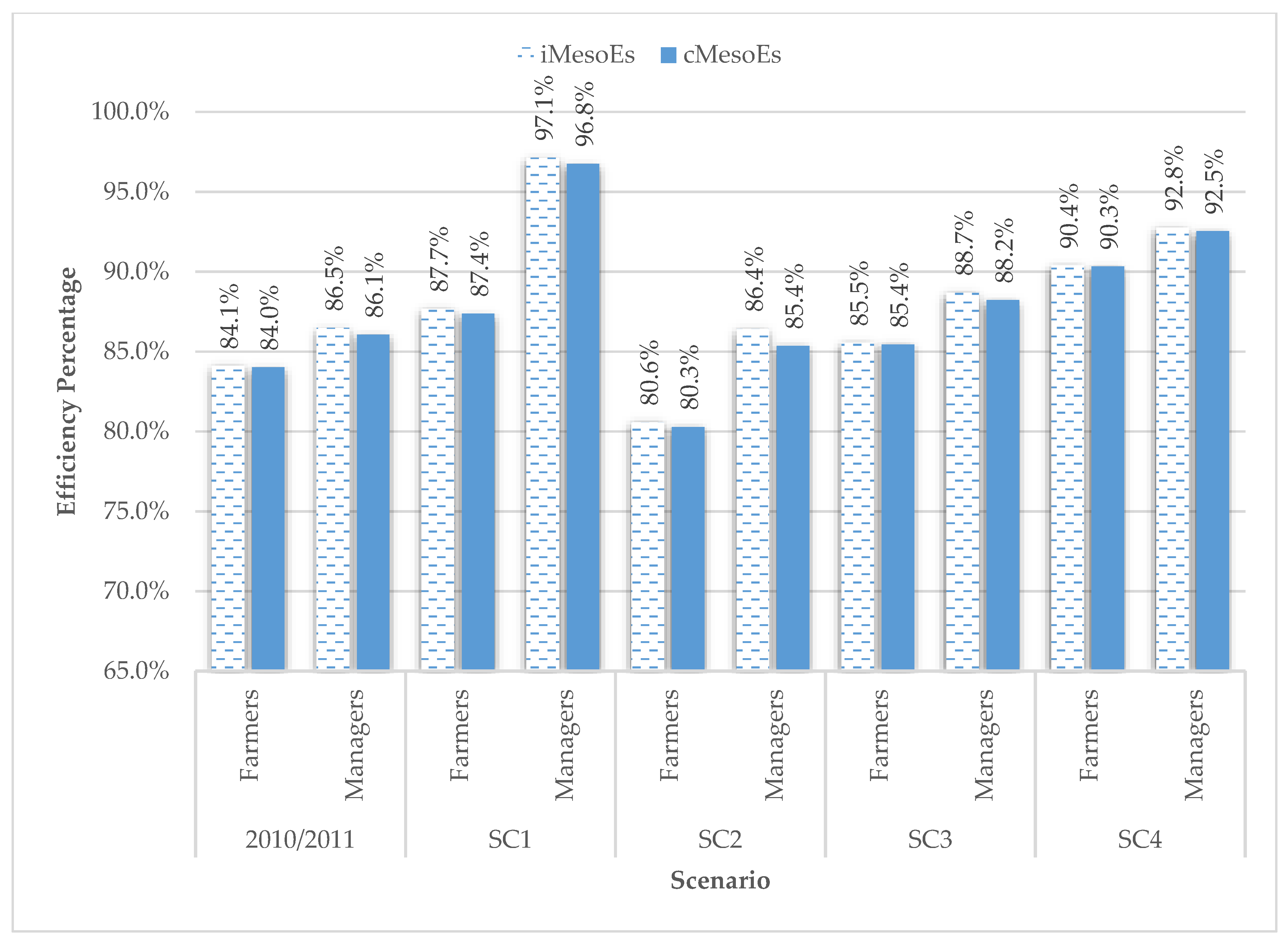Assessment of the Agricultural Water Use in Jericho Governorate Using Sefficiency
Abstract
:1. Introduction
2. Methods and Materials
2.1. Sefficiency Method
- VA: Volume of abstracted water from the main source or alternatively, VU: the level of aquifer at the beginning of the period;
- PP: Precipitation; and
- OS: Volume of water from other sources (e.g., purchased water)
- RF: Return flow to the main source or alternatively, VD: the level of aquifer at the end of the period);
- ET: Evapotranspiration;
- RP: Potential return (the water returned to the environment, but not the main source, hence, aquifer replenishment is considered as RF not RP); and
- NR: Nonreusable, water consumption (e.g., evaporation resulting from non-agricultural activities).
- : the quality dimension of X.
- : the beneficial dimension of X.
- : the quality weight of X.
- : the beneficial weight of X.
- : the usefulness weight of X.
2.2. Study Area
2.3. WUS Characterisation Data
2.3.1. Water Instances Quantities
- : Infiltration back to EAB due to irrigation equipment shortcomings.
- : Evaporation caused by irrigation equipment shortcomings.
- : Infiltration back to EAB after rainfall events.
- : Evaporation after rainfall events.
2.3.2. Quality Weights
2.3.3. Beneficial Weights
3. Results and Discussion
3.1. WUS Characterisation Results
3.2. Sefficiency Results and Scenario Analysis
4. Conclusions
Author Contributions
Funding
Acknowledgments
Conflicts of Interest
References
- Mizyed, N. Impacts of Climate Change on Water Resources Availability and Agricultural Water Demand in the West Bank. Water Resour. Manag. 2008, 23, 2015–2029. [Google Scholar] [CrossRef]
- La Jeunesse, I.; Cirelli, C.; Aubin, D.; Larrue, C.; Sellami, H.; Afifi, S.; Bellin, A.; Benabdallah, S.; Bird, D.; Deidda, R.; et al. Is climate change a threat for water uses in the Mediterranean region? Results from a survey at local scale. Sci. Total Environ. 2016, 543, 981–996. [Google Scholar] [CrossRef] [PubMed]
- Chenoweth, J.; Hadjinicolaou, P.; Bruggeman, A.; Lelieveld, J.; Levin, Z.; Lange, M.A.; Xoplaki, E.; Hadjikakou, M. Impact of climate change on the water resources of the eastern Mediterranean and Middle East region: Modeled 21st century changes and implications. Water Resour. Res. 2011, 47. [Google Scholar] [CrossRef]
- Sowers, J.; Vengosh, A.; Weinthal, E. Climate change, water resources, and the politics of adaptation in the Middle East and North Africa. Clim. Chang. 2010, 104, 599–627. [Google Scholar] [CrossRef]
- Chenoweth, J. Will the water resources of Israel, Palestine and Jordan remain sufficient to permit economic and social development for the foreseeable future? Hydrol. Res. 2010, 13, 397–410. [Google Scholar] [CrossRef] [Green Version]
- Lautze, J.; Kirshen, P. Water allocation, climate change, and sustainable water use in Israel/Palestine: The Palestinian position. Water Int. 2009, 34, 189–203. [Google Scholar] [CrossRef]
- Lowi, M.R. Bridging the Divide: Transboundary Resource Disputes and the Case of West Bank Water. Int. Secur. 1993, 18, 113–138. [Google Scholar] [CrossRef]
- Gleick, P.H. Water and Conflict: Fresh Water Resources and International Security. Int. Secur. 1993, 18, 79–112. [Google Scholar] [CrossRef]
- Özerol, G.; Haddad, M.; Judeh, T. Assessment of water governance in the West Bank, Palestine. Int. J. Glob. Environ. Issues 2017, 16, 119. [Google Scholar] [CrossRef]
- Haddad, M. Sustainable water demand management versus developing new and additional water in the Middle East: A critical review. Hydrol. Res. 2001, 3, 143–163. [Google Scholar] [CrossRef]
- Ronen, Y. Israel, Palestine and the ICC—Territory Uncharted but not Unknown. J. Int. Crim. Justice 2014, 12, 7–25. [Google Scholar] [CrossRef]
- UNCTAD. The Besieged Palestinian Agricultural Sector; United Nations Conference on Trade and Development: Geneva, Switzerland, 2015. [Google Scholar]
- PWA. Groundwater Resources—Utilization 2015. Available online: http://www.pwa.ps/page.aspx?id=NL8EMVa2547842781aNL8EMV (accessed on 03 October 2019).
- Lazarou, E. Briefing—Water in the Israeli-Palestinian Conflict; European Parliamentary Research Service: Brussels, Belgium, 2016. [Google Scholar]
- PWA. Status Report of Water Resorces in the Occupied State of Palestine—2012; Palestinian Water Authority: Ramallah, Palestine, 2013. [Google Scholar]
- PWA. Annual Status Report on water resources, Water Supply, and Wastewater in the Occupied State of Palestine 2011; PWA: Ramallah, Palestine, 2012. [Google Scholar]
- Shamir, U. Water Agreements Between Israel and Its Neighbors. In Transformations of Middle Eastern Natural Environments: Legacies and Lessons; Bernhardsson, M., Albert, J., Kenna, R., Eds.; Yale School of Forestry and Environmental Studies, Yale University: Haven, CT, USA, 1998. [Google Scholar]
- Israel Water Authority. The Water Issue Between Israel and the Palestinians—Main Facts; Israel Water Authority: Tel Aviv, Israel, 2012. [Google Scholar]
- Tal-Spiro, O. Israeli-Palestinian Cooperation on Water Issues; Center for Research and Information Kiryay Ben Gurion: Jerusalem, Israel, 2011. [Google Scholar]
- PWA. Strategic Water Resource and Transmission Plan; PWA: Ramallah, Palestine, 2014. [Google Scholar]
- PWA. Water Sector Reform Plan 2016–2018; PWA: Ramallah, Palestine, 2016. [Google Scholar]
- Bursche, A. Agricultural Water Demand Management in the Palestinian Territories; Albert-Ludwigs-University Freiburg: Breisgau, Germany, 2011. [Google Scholar]
- Shevah, Y. Chapter Six—Challenges and Solutions to Water Problems in the Middle East, in Chemistry and Water; Ahuja, S., Ed.; Elsevier: Amsterdam, The Netherlands, 2017; pp. 207–258. [Google Scholar]
- Haddad, M. Planning Water Supply under Complex and Changing Political Conditions: Palestine as a Case Study. Water Policy 1998, 1, 177–192. [Google Scholar] [CrossRef]
- Rahil, M.; Qanadillo, A. Effects of different irrigation regimes on yield and water use efficiency of cucumber crop. Agric. Water Manag. 2015, 148, 10–15. [Google Scholar] [CrossRef]
- Alsharif, K.; Feroz, E.H.; Klemer, A.; Raab, R. Governance of water supply systems in the Palestinian Territories: A data envelopment analysis approach to the management of water resources. J. Environ. Manag. 2008, 87, 80–94. [Google Scholar] [CrossRef]
- Al-Juneidi, F.; Isaac, J. An Assessment of Irrigation Efficiency in the Palestinian West Bank; Applied Research Institute - Jerusalem (ARIJ): Bethlehem, Palestine, 2000.
- Jensen, M.E.; Harrison, D.S.; Korven, H.C.; Robinson, F.E. The Role of Irrigation in Food and Fiber Production; American Society of Agricultural Engineers.: St. Joseph, MA, USA, 1980; pp. 15–41. [Google Scholar]
- Jensen, M.E. Beyond irrigation efficiency. Irrig. Sci. 2007, 25, 233–245. [Google Scholar] [CrossRef]
- Haie, N.; Keller, A.A. Macro, meso, and micro-efficiencies and terminologies in water resources management: A look at urban and agricultural differences. Water Int. 2013, 39, 35–48. [Google Scholar] [CrossRef]
- Pereira, L.S.; Cordery, I.; Iacovides, I. Improved indicators of water use performance and productivity for sustainable water conservation and saving. Agric. Water Manag. 2012, 108, 39–51. [Google Scholar] [CrossRef]
- Willardson, L.S.; Allen, R.G.; Frederiksen, H.D. Elimination of Irrigation Efficiencies. In Proceedings of the 13th Technical Conference, USCID, Denver, CO, USA, 19–22 October 1994; USCID—United States Committee on Irrigation and Drainage: Denver, CO, USA, 1994. [Google Scholar]
- Keller, A.A.; Keller, J. Effective Efficiency: A Water Use Efficiency Concept for Allocating Freshwater Resources; Center for Economic Policy Studies: Arlington, VA, USA, 1995. [Google Scholar]
- Haie, N.; Keller, A.A. Effective Efficiency as a Tool for Sustainable Water Resources Management1. JAWRA J. Am. Water Resour. Assoc. 2008, 44, 961–968. [Google Scholar] [CrossRef]
- Haie, N.; Keller, A.A. Macro, Meso, and Micro?Efficiencies in Water Resources Management: A New Framework Using Water Balance1. JAWRA J. Am. Water Resour. Assoc. 2011, 48, 235–243. [Google Scholar] [CrossRef]
- Ahmad, M.T.; Haie, N.; Yen, H.; Tuqan, N.A.S. Sefficiency of a Water Use System: The Case of Kano River Irrigation Project, Nigeria. Int. J. Civ. Eng. 2017, 16, 929–939. [Google Scholar] [CrossRef]
- Zhou, Q.; Deng, X.; Wu, F.; Li, Z.; Song, W. Participatory Irrigation Management and Irrigation Water Use Efficiency in Maize Production: Evidence from Zhangye City, Northwestern China. Water 2017, 9, 822. [Google Scholar] [CrossRef] [Green Version]
- Priscoli, J.D. What is Public Participation in Water Resources Management and Why is it Important? Water Int. 2004, 29, 221–227. [Google Scholar] [CrossRef]
- Haddad, M.; Bakir, A. An Evaluation of Public Concerns About Water Management in the Palestinian Territory Pre, During, and Post the National Uprising. Water Resour. Manag. 1998, 12, 359–374. [Google Scholar] [CrossRef]
- Haddad, M. Future water institutions in Palestine. Hydrol. Res. 2005, 7, 181–200. [Google Scholar] [CrossRef]
- Israeli Ministry of Agriculture. The Jordan Valley District. 2019. Available online: https://www.moag.gov.il/ar/%D9%88%D8%AD%D8%AF%D8%A7%D8%AA%20%D8%A7%D9%84%D9%88%D8%B2%D8%A7%D8%B1%D8%A9/mekcozot_misrad/machoz_amaqim/Pages/default.aspx (accessed on 09 October 2019).
- WAFA. Palestinian Part of Jordan Valley. 2015. Available online: http://info.wafa.ps/ar_page.aspx?id=9663 (accessed on 13 November 2019).
- Haie, N. Sefficiency (sustainable efficiency) of water–energy–food entangled systems. Int. J. Water Resour. Dev. 2015, 32, 721–737. [Google Scholar] [CrossRef]
- Palestinian Ministry of Planning and International Cooperation. p. GIS ArcMap Shapefiles Produced by the Ministry of Planning and International Cooperation in 1998 and Made Available for Public Use; Palestinian Ministry of Planning and International Cooperation: Ramallah, Palestine, 1998. [Google Scholar]
- EcoPeace Middle East. Regional NGO Master Plan for Sustainable Development in the Jordan Valley; EcoPeace Middle East: Tel Aviv-Yafo, Israel, 2015. [Google Scholar]
- PCBS. Agricultural Census 2010 Final Results – Jericho & Al Aghwar Governorate; Palestinian Central Bureau of Statistics and Ministry of Agriculture: Ramallah, Palestine, 2012.
- PCBS. Preliminary Results of the General Census of Population, Housing and Establishments 2017, in Census 2017; Palestinian Central Bureau of Statistics: Ramallah, Palestine, 2018.
- ARIJ. Opportunities and Challenges of Palestinian Development actions in Area; Ghattas, C.R., Ghattas, C.R., Rishmawi, K., Isaac, J., Zboun, I., Hilal, J., Abu Zahra, A., Khalifeh, I., Eds.; ARIJ: Bethlehem, Palestine, 2016.
- Kadman, N. Acting the Landlord: Israel’s Policy in Area C, the West Bank; Kadman, N., Stein, Y., Eds.; B’Tselem: Jerusalem, Israel, 2013. [Google Scholar]
- World Bank. Assessment of Restrictions on Palestinian Water Sector Development; World Bank: Washington, DC, USA, 2009. [Google Scholar]
- World Bank. Fiscal Crisis, Economic Prospects—The Imperative for Economic Cohesion in the Palestinian Territories, in Economic Monitoring Report to the Ad Hoc Liaison Committee; World Bank: Washington, DC, USA, 2012. [Google Scholar]
- Smith, M. CROPWAT: A Computer Program for Irrigation Planning and Management; Food and Agriculture Organization of the United Nations: Rome, Italy, 1992. [Google Scholar]
- Isaac, J.; Sabbah, W. Water Resources and Irrigated Agriculture in the West Bank; ARIJ: Bethlehem, Palestine, 1998.
- Burt, C.; Mutziger, A.J.; Allen, R.G.; Howell, T.A. Evaporation Research: Review and Interpretation. J. Irrig. Drain. Eng. 2005, 131, 37–58. [Google Scholar] [CrossRef] [Green Version]
- Schwankl, J.L.; Hanson, L.R. Surface Drip Irrigation, in Developments in Agricultural Engineering; Lamm, F.R., Ayars, J.E., Nakayama, F.S., Eds.; Elsevier: Amsterdam, The Netherlands, 2007; pp. 431–472. [Google Scholar]
- Martinez, J.; Reca, J. Water Use Efficiency of Surface Drip Irrigation versus an Alternative Subsurface Drip Irrigation Method. J. Irrig. Drain. Eng. 2014, 140, 04014030. [Google Scholar] [CrossRef]
- Brouwer, C.; Heibloem, M. Irrigation Water Needs, in Irrigation Water Management; FAO: Rome, Italy, 1986. [Google Scholar]
- Ayers, S.R.; Westcot, D.W. Water Quality for Agriculture; FAO—Food and Agriculture Organization of the United Nations: Rome, Italy, 1985. [Google Scholar]
- PCBS. Metrological Tables—Year 2009; PCBS: Ramallah, Palestine, 2010.
- PCBS. Annual Rainfall Quantity (mm) in the West Bank by Station Location and Year, 2010–2018. 2019. Available online: http://www.pcbs.gov.ps/Portals/_Rainbow/Documents/Metrological-2018-04E.html (accessed on 27 April 2020).







| Month | Jan | Feb | Mar | Apr | May | Jun | Jul | Aug | Sep | Oct | Nov | Dec |
|---|---|---|---|---|---|---|---|---|---|---|---|---|
| Avg. high Temp. (°C) | 19.1 | 20.9 | 24.3 | 29.3 | 33.7 | 36.7 | 37.8 | 37.6 | 36.1 | 32.3 | 26.4 | 20.5 |
| Avg. low Temp. (°C) | 7.4 | 8.3 | 10.5 | 14.2 | 17.6 | 20.4 | 22.1 | 22.4 | 21.2 | 17.9 | 12.9 | 9 |
| Mean Temp. (°C) | 13.2 | 14.6 | 17.4 | 21.7 | 25.6 | 28.5 | 29.9 | 30 | 28.6 | 25.1 | 19.6 | 14.7 |
| Avg. relative humidity (%) | 70 | 65 | 57 | 45 | 38 | 38 | 40 | 44 | 47 | 51 | 60 | 70 |
| Avg. daily sun (h) | 5.5 | 5.9 | 7.7 | 9.3 | 9.4 | 11.8 | 11.7 | 11.6 | 10.5 | 8.7 | 6.5 | 5.6 |
| Avg. atm pressure (mbar) | 1048 | 1046 | 1044 | 1041 | 1040 | 1037 | 1034 | 1035 | 1039 | 1042 | 1046 | 1048 |
| Avg. wind speed (km/h) | 4.5 | 5.2 | 6.5 | 8.1 | 7.9 | 7.7 | 8 | 7.4 | 6.3 | 4.7 | 4 | 3.8 |
| Avg. evaporation (mm) | 71 | 74 | 128 | 182 | 259 | 288 | 294 | 274 | 225 | 148 | 96 | 62 |
| Avg. precipitation (mm) | 36 | 29 | 20 | 9 | 1 | 1 | 0 | 0 | 0 | 6 | 17 | 28 |
| Crop Type | Surface Irrigation | Drip Irrigation | Sprinklers Irrigation |
|---|---|---|---|
| Field Crops | 0.17 | 1.91 | 0.07 |
| Vegetables | 1.28 | 24.65 | 0.37 |
| Trees | 0.43 | 5.46 | 0.06 |
| Total (%) | 1.88 (5.5%) | 32.01 (93.0%) | 0.51 (1.5%) |
| Crop | Area (km2) | ETo (mm/period) | kc | ETc (mm/period) | CWD (Mm3/y) | |
|---|---|---|---|---|---|---|
| Trees | Date | 4.79 | 1668 | 0.935 | 1559 | 7.47 |
| Banana | 1.11 | 1330 | 0.872 | 1160 | 1.29 | |
| Lemon | 0.25 | 1668 | 0.796 | 1327 | 0.33 | |
| Grape | 0.25 | 1668 | 0.509 | 850 | 0.22 | |
| Valencia Orange | 0.14 | 1668 | 0.678 | 1132 | 0.16 | |
| Vegetables | Squash | 7.60 | 983 | 0.904 | 888 | 6.75 |
| Eggplant | 3.88 | 1504 | 0.751 | 1130 | 4.38 | |
| Maize | 3.83 | 806 | 0.720 | 580 | 2.22 | |
| Tomato | 2.38 | 806 | 0.832 | 670 | 1.59 | |
| Jew’s Mallow | 0.71 | 1668 | 0.832 | 1388 | 0.98 | |
| Field Crops | Wheat | 0.66 | 925 | 0.840 | 777 | 0.51 |
| Sorghum | 1.18 | 257 | 0.720 | 185 | 0.22 | |
| Dry Onion | 0.10 | 1145 | 0.916 | 1049 | 0.10 | |
| Mint | 0.04 | 1668 | 0.832 | 1388 | 0.05 | |
| Barley | 0.29 | 240 | 0.715 | 171 | 0.05 | |
| Variable | (Mm)3 | Farmers | Manags | Farmers | Managers | |
|---|---|---|---|---|---|---|
| PP | 3.59 | 1 | 0.6 | 0.6 | 2.15 | 2.15 |
| VAPWA | 24.19 | 0.9 | 1 | 1 | 21.77 | 21.77 |
| VAUnr | 14.40 | 0.9 | 1 | 1 | 12.96 | 12.96 |
| ET | 33.09 | 1 | 0.92 | 0.92 | 30.44 | 30.44 |
| RFEq | 3.47 | 0.2 | 0.2 | 1 | 0.14 | 0.69 |
| NREq | 2.32 | 1 | 0.1 | 0.1 | 0.23 | 0.23 |
| RFPP | 1.98 | 0.2 | 0.2 | 1 | 0.08 | 0.40 |
| NRPP | 1.32 | 1 | 0.1 | 0.1 | 0.13 | 0.13 |
© 2020 by the authors. Licensee MDPI, Basel, Switzerland. This article is an open access article distributed under the terms and conditions of the Creative Commons Attribution (CC BY) license (http://creativecommons.org/licenses/by/4.0/).
Share and Cite
Tuqan, N.; Haie, N.; Ahmad, M.T. Assessment of the Agricultural Water Use in Jericho Governorate Using Sefficiency. Sustainability 2020, 12, 3634. https://doi.org/10.3390/su12093634
Tuqan N, Haie N, Ahmad MT. Assessment of the Agricultural Water Use in Jericho Governorate Using Sefficiency. Sustainability. 2020; 12(9):3634. https://doi.org/10.3390/su12093634
Chicago/Turabian StyleTuqan, Nasser, Naim Haie, and Muhammad Tajuri Ahmad. 2020. "Assessment of the Agricultural Water Use in Jericho Governorate Using Sefficiency" Sustainability 12, no. 9: 3634. https://doi.org/10.3390/su12093634
APA StyleTuqan, N., Haie, N., & Ahmad, M. T. (2020). Assessment of the Agricultural Water Use in Jericho Governorate Using Sefficiency. Sustainability, 12(9), 3634. https://doi.org/10.3390/su12093634






